contact Boss
Don’t rush to close it, talk to our boss directly, you will get a surprise.
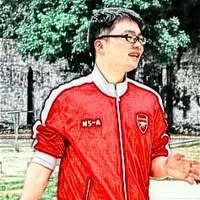


1900+ Users
Completed User Services
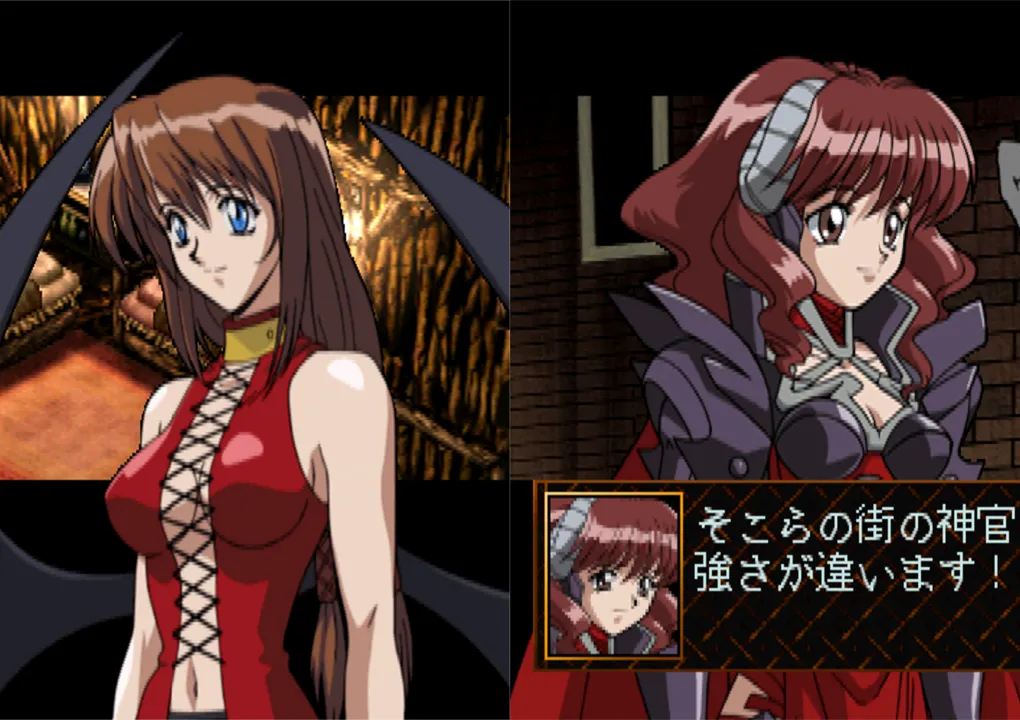
Reawakening 90s Console Memories.
If you’re a hardcore gamer who loves strategy games, the Sega Saturn will undoubtedly leave a lasting impression.
The 32-bit console wars of the mid-1990s are a topic of much discussion among veteran gamers. The Sony PlayStation and the Sega Saturn showcased groundbreaking hardware performance in many areas, allowing for a vibrant and diverse range of gameplay styles.
The Sega Saturn was previously known for its arcade-style action games, but it also excelled in text-based games that required ample playtime. The strategy game genre, in particular, has seen a significant resurgence in recent years.
In this issue, we’ll review the 10 most iconic strategy games for the Sega Saturn console. See which one is a true childhood memory for you! Recommended! Remember to like and bookmark it!
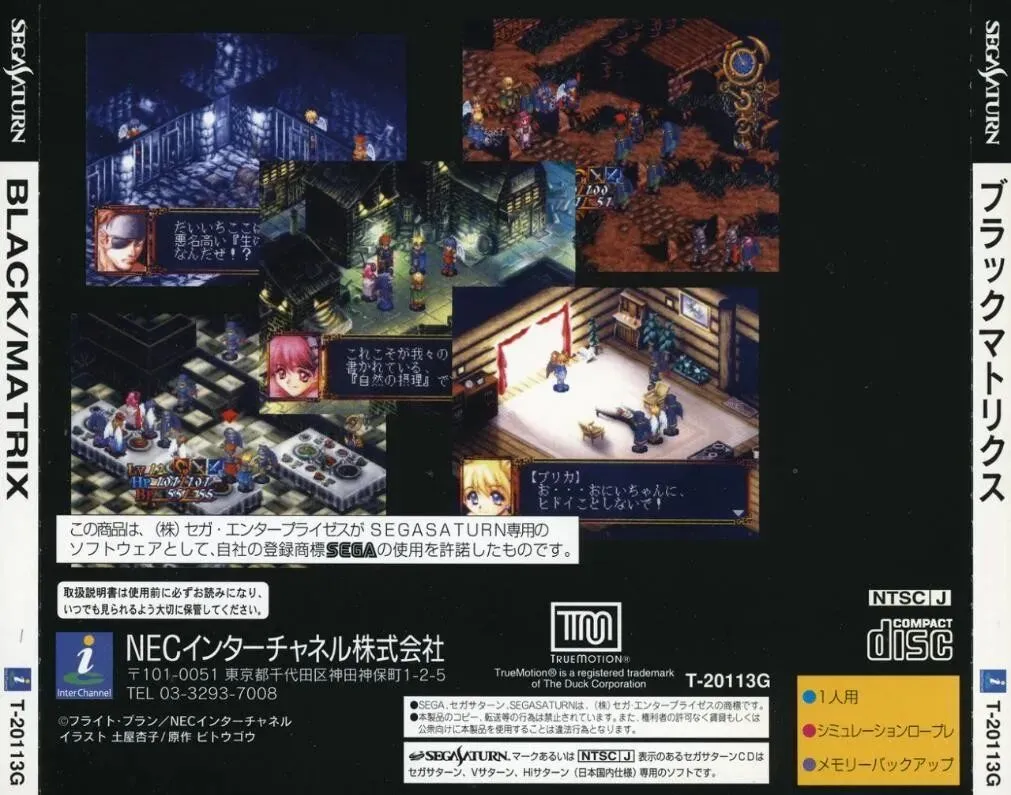
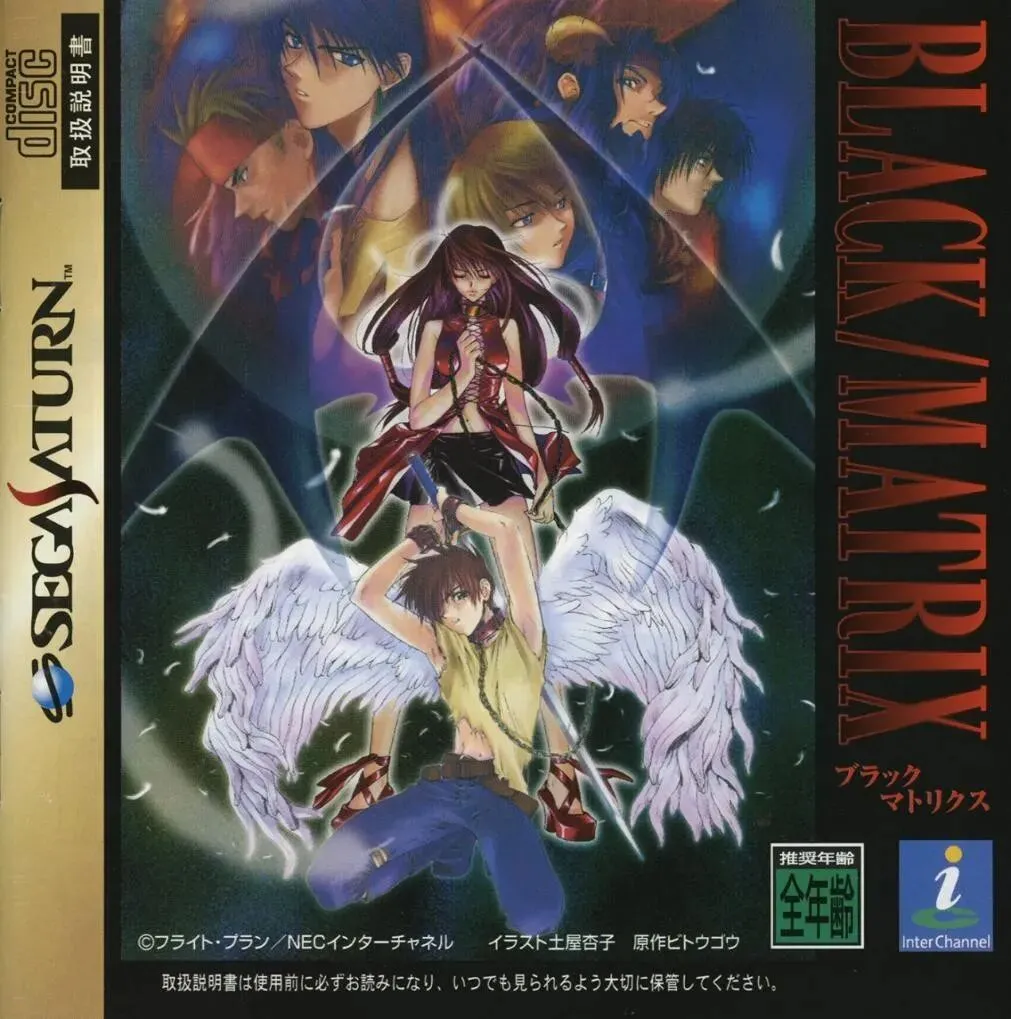
This name may sound unfamiliar to new players, but over twenty years ago, it epitomized the art of high-quality strategy chess. Black Matrix (original Japanese name: ブラックマトリクス) is a hardcore strategy role-playing game (SRPG) released towards the end of the Sega Saturn (SS) console generation. Developed by Japanese studio Flight-Plan and published by NEC Interchannel, it was released exclusively in Japan on August 27, 1998.
The game’s story is set in a fantasy world where the forces of Hell have won the war against the forces of Heaven, and the black-winged descendants of demons rule over the white-winged descendants of angels. The interplay of relationships between the numerous characters is a key feature of this game, and the character illustrations and voice acting are both impressive.
This game features a 45-degree battlefield perspective, and commands like attack and magic are easy to use. Players are rated based on their performance after completing levels, and there are numerous cutscenes and dialogues between missions, as well as mini-games like whack-a-mole, making it a perfect experience for newcomers to the game.
As one of the representative works of the Sega Saturn strategy chess category, this game has become known as the “last gem of the SS” by veteran players for its subversive world view setting, cinematic narrative, and unique tactical system. Its core features can be deeply analyzed from the following dimensions.
The game features a Judeo-Christian fantasy universe with a powerful core premise:
Historical Background: In this world, the forces of Hell have defeated Heaven. The descendants of the Devil (the Black Wings) have distorted history, reversed the order of good and evil, and reduced the descendants of the Angels (the White Wings) to slavery, establishing an extremely authoritarian system of rule.
Social Rules: The Black Wings define “love and compassion” as serious crimes, and anyone who shows emotional connection will be hunted down. The player, as the protagonist Abel, must escape from prison and rescue his exiled mentor, gradually uncovering the truth behind the conflict between the Black and White Wings.
Visual Symbols: The game makes extensive use of religious imagery – the bat wings of the Blackwings, the feather shackles of the Whitewings, and the cross elements in the judgment scenes – to form a strong dark aesthetic style. This bold theme was extremely rare in console games in the 1990s.
As a strategy RPG, the game adopts a three-stage loop of “story presentation – town management – tactical combat”, and its core gameplay is both deep and innovative:
Battle System: Featuring a 45-degree isometric battlefield, players control multiple characters, including Abel (with customizable companions), and formulate tactics based on terrain variations and elemental counters (fire, water, light, and dark). After battle, players are ranked based on their kill efficiency and survival status, with high rankings unlocking rare equipment.
Narrative Rhythm: The game progresses through chapters, each with fully voiced animations at the beginning and end (a rare example of fully voiced content in late-stage Sega Saturn games). While the plot is simple, the interplay of characters is intricately crafted—the machinations of the Black Wing rulers, the rebellion of the White Wing slaves, and the wavering stance of the neutral humans all create a multi-layered conflict.
Casual Diversion: To balance the intensity of the hardcore tactical gameplay, mini-games like “Whack-a-Mole” are interspersed, allowing players to obtain rare items, making the game easier for novice players.
Black Matrix was born at the end of the Sega Saturn’s life cycle, and its development and market performance reflected the industry environment at the time:
Platform Adaptation: Leveraging the Sega Saturn’s 2D graphics, character portraits feature a delicate, hand-drawn anime style. While combat effects are rendered in 2D pixels, multi-layered scrolling technology creates a pseudo-3D effect, effectively showcasing the 2D capabilities of the Saturn.
Commercial Performance: As a Japan-exclusive title, the game launched at 6,800 yen. While sales figures have not been released, its unique theme earned it an 83% media rating (RPGFan review). Due to Sega’s shift to the Dreamcast console at the time of its release, the game didn’t receive widespread promotion, ultimately becoming a niche hit.
Series Continuation: Although the Sega Saturn version was the first game in the series, sequels were subsequently released on multiple platforms – the 1999 Dreamcast version “Black Matrix Advanced”, the 2002 PS2 version “Black Matrix II”, etc., forming an IP vitality that lasted for nearly ten years.
Today, Black Matrix has become a popular title in the Sega Saturn collector’s market:
Physical Price: Brand-new, unopened, original discs can fetch up to $268 on platforms like eBay, while used ones can fetch around $15, a significant premium compared to most other Saturn games of the period.
Player Reputation: Veteran gamers generally agree that it’s “storytelling depth surpasses that of other SRPGs of the time,” but they also point out issues like a slightly stiff control feel and a sudden increase in difficulty in the later stages. However, its merits outweigh its flaws: its philosophical exploration of the dualism of good and evil elevates it beyond mere entertainment, becoming a representative work of both thought and entertainment in the 1990s console genre.
Langrisser Dramatic Edition is a collection of strategy role-playing games (SRPGs) developed by Masaya Studios of Japan and published by Sega. It was released exclusively on the Sega Saturn (SS) platform on March 27, 1997.
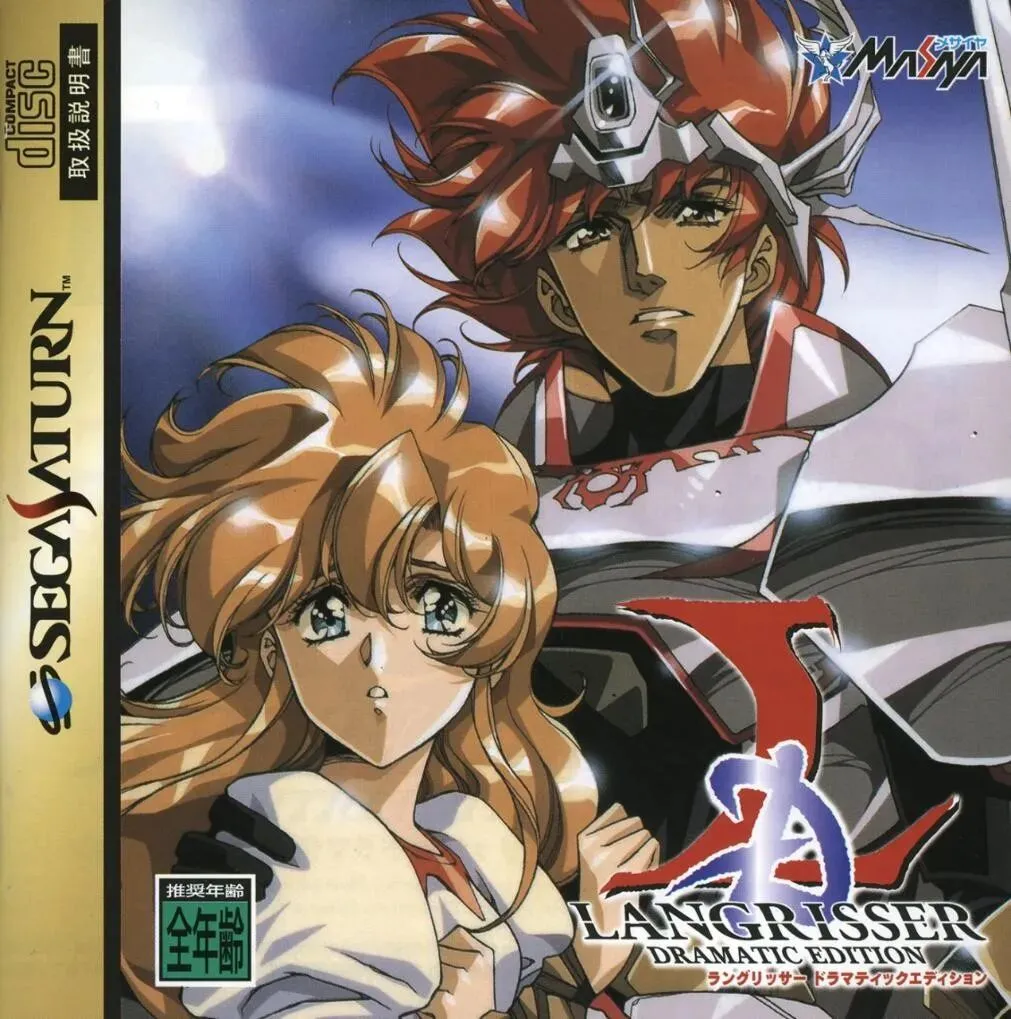
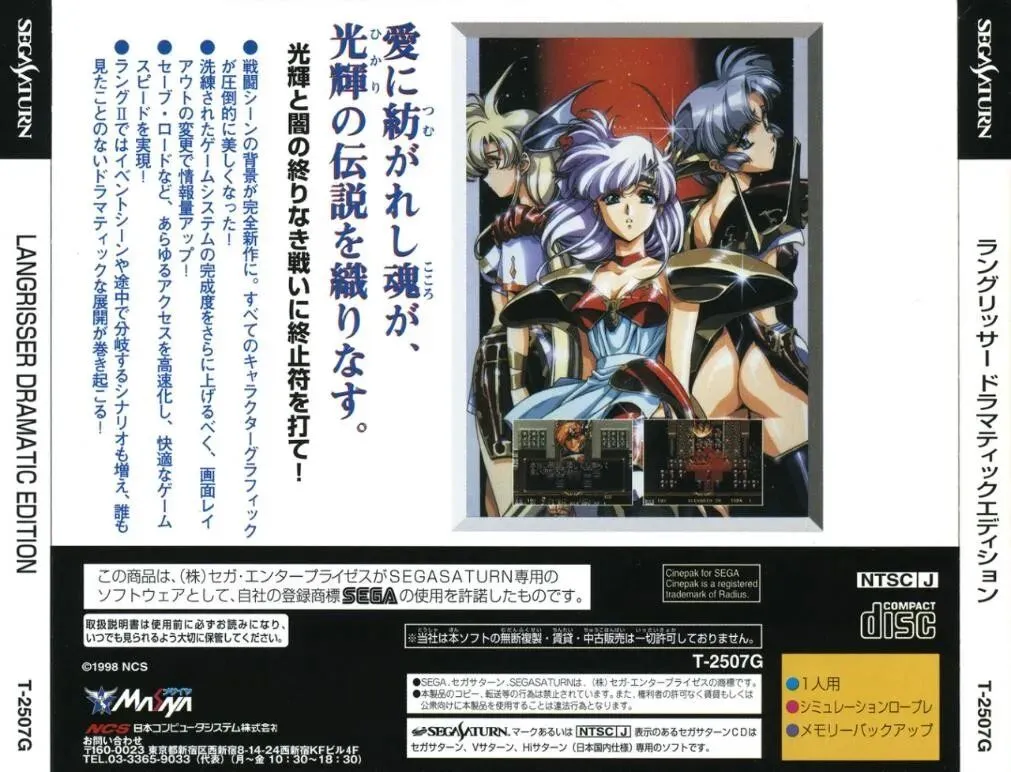
For veterans of Sega’s previous generation of 16-bit consoles, the two Langrisser games are considered the hallmarks of strategy and wargames, with Langrisser II, in particular, making fans of the SFC envious and exclaiming, “What a treat!”
As a remake of the classic Langrisser IP, it comprehensively upgrades the 1991 Langrisser and 1994 Langrisser 2. With its exquisite visual overhaul, comprehensive storyline, and platform-exclusive content, it has become a benchmark for the Sega Saturn strategy and wargame genre, and is considered the “gold standard” for series remakes by veteran players.
The war story between the two forces, the Holy Sword of Light Languriza and the Demonic Sword of Darkness Aluhazat, is extremely immersive. The many images created by the popular painter Tomoshi Urushihara are distinctive and impressive. The classic rules of the three types of infantry, cavalry, and lance, as well as the commander mercenary enhancement system, make it easy for newcomers to get started, while leaving enough strategic space for hardcore players.
The Saturn Edition collection has remade and ported both the first and second generations of works. The basic gameplay has been retained, and the visual effects such as scene maps have been significantly improved. Some new dialogue voices have further strengthened the plot performance, and the balance of events and battles in the levels has also been adjusted. Even old players from the MD era will have a brand new experience, and it is not to be missed for new players.
Graphics Upgrade: Completely abandoning the pixel art style of the original MD version, the game adopted the 2D hand-drawn techniques that Sega Saturn excelled at. Character portraits were upgraded to a then-top resolution of 640×480.
Battle animations incorporated multi-layered scrolling effects (such as particle diffusion during spellcasting and dynamic lighting and shadows from sword impacts).
Battlefield maps enhanced the sense of immersion through delicate color transitions and terrain details (such as burning castles and frozen rivers).
In particular, the entrance animation of Lucilis, the “Goddess of Light,” in Langrisser 2 became a classic example of Saturn’s 2D rendering capabilities.
Voice and Music: For the first time, full voice-overs were added to the entire plot dialogue (the original version had no dubbing), and well-known voice actors such as Takehito Koyasu and Megumi Hayashibara were invited to dub.
The protagonist Erwin’s line “For justice and peace” became a famous scene in the series; the music was re-arranged as a symphony while retaining the original melody.
The grandeur of “Langrisser Theme” and the tragedy of “Fate” were perfectly presented through the Saturn audio chip, and the CD sound quality far exceeds the FM synthesized sound effect of the MD.
Story Completeness: A large number of side plots that were deleted from the original version have been added, such as the origin story of “Dark Prince Bozanlu” in “Langrisser 1” and the details of the bond between “Leon and Eggbert” in “Langrisser 2”.
These are supplemented through cutscenes and character dialogues, making the world view of “The Cycle of Light and Darkness” more three-dimensional.
System Improvements: Inheriting the original version’s core combat system of “arms counteraction” (infantry counters cavalry, cavalry counters archers, etc.) and “commander + mercenary”, a new “proficiency system” has been added – the more times a commander uses a specific type of soldier, the higher the attribute bonus of that type of soldier, and the strategic depth is greatly improved; at the same time, the original version’s cumbersome item synthesis process has been simplified, and a new “store bulk purchase” function has been added to reduce the burden of repetitive operations.
New Animation: Approximately 30 minutes of original animation (co-produced by Production I.G.) covering key plot turning points (such as the “Fall of Bardiya” and “Building Up Before the Final Battle” in Langrisser 2) is inserted. The realistic animation style forms a subtle balance with the game’s fantasy worldview.
Hidden elements: By making specific plot choices, you can unlock Easter eggs such as “Developer Interviews” and “Unadopted Setting Collections”, and even obtain early concept drawings of “Langrisser 3” (the third generation had not yet been announced at the time). These contents only exist in the Saturn version and have become an important plus for the collection value.
Compared to the original MD version: In addition to the overwhelmingly improved graphics and sound effects, the Saturn version fixed numerous bugs from the original (such as the issue in Langrisser 2 where full-screen magic indiscriminately attacked allies) and adjusted the difficulty curve in later levels, avoiding the original version’s imbalance of being easy early on and suddenly difficult later on.
Compared to subsequent ports: The 2000 PS version retained the core content but cut some of the Saturn version’s animations due to disc capacity limitations. The 2019 Steam remake, while adding 3D models, leaned towards a more cute aesthetic, significantly different from the Saturn version’s epic feel. Veteran players generally believe that the Saturn version strikes the best balance between retaining the original’s spirit and upgrading its technology.
Exclusive characters and plot: The Saturn version of “Langrisser 2” added a new hidden character “Sonia” (a mysterious woman from the Dark Knights). Her exclusive plot reveals the power struggle within the “Dark Forces”. This setting was not inherited by subsequent versions and became a “plot easter egg” unique to the Saturn version.
Commercial Performance: Sold approximately 80,000 copies in Japan in its first week, becoming one of the best-selling SRPGs for the Sega Saturn in 1997. Media reviews generally received ratings above 9/10 (Famitsu gave it a 34/40), with the commentary stating that “the sincerity of the remake surpasses all other compilations of the same period.”
Influence on the Series: It established Langrisser’s core positioning of “story-driven tactical depth,” and its framework of “commander development and unit combination” was adopted by subsequent games. The Saturn version’s animated narrative also provided a model for the series’ later “visual novel-style plots.”
Collector Value: As a “complete” version exclusive to the Sega Saturn, the original game commands a stable price in the collector’s market—a new, unopened copy fetches around $300, while a used, well-preserved disc and manual set fetches over $100, far exceeding the collector’s premium of other SRPGs of the period.
Koei Tecmo was a beloved gamer during the 32-bit console era. Turn-based combat was a key component of its numerous historical simulation games, which were later refined and released as standalone tactical games.
As a console port of the 1995 DOS version of Sangokushi Eiketsuden, it became a representative historical strategy game for the Sega Saturn thanks to its platform-exclusive visual upgrades, official Chinese language support, and unique gameplay adjustments. It was also a rare “Three Kingdoms masterpiece” in the console world of the 1990s.
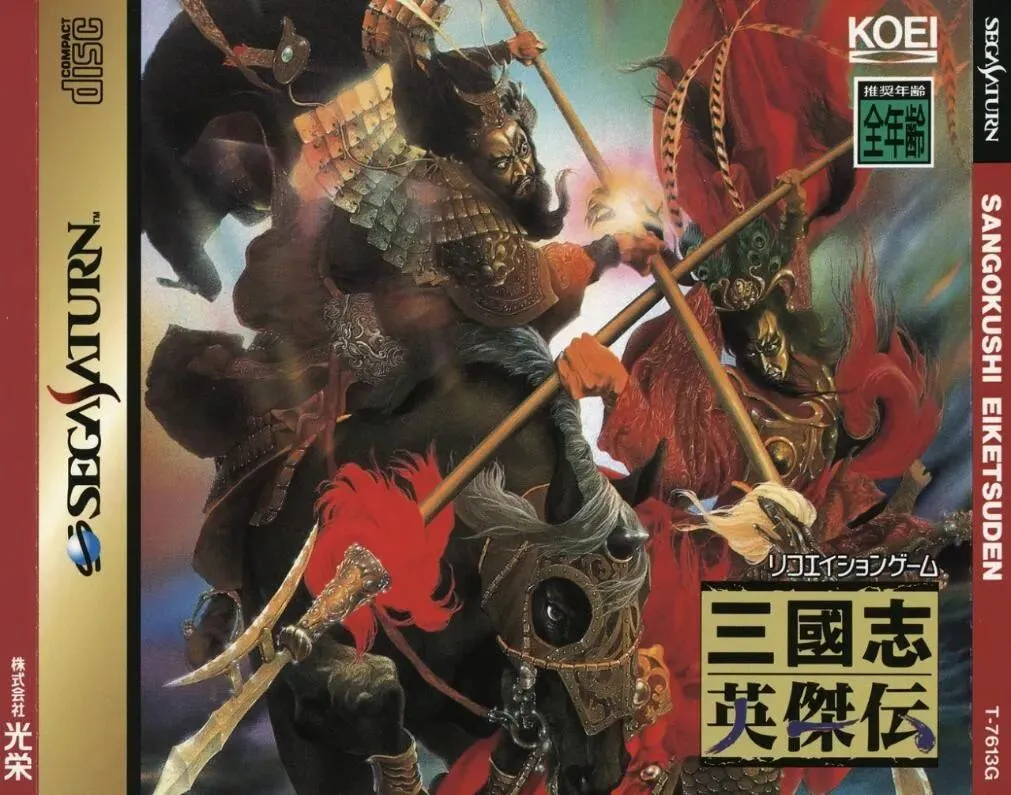
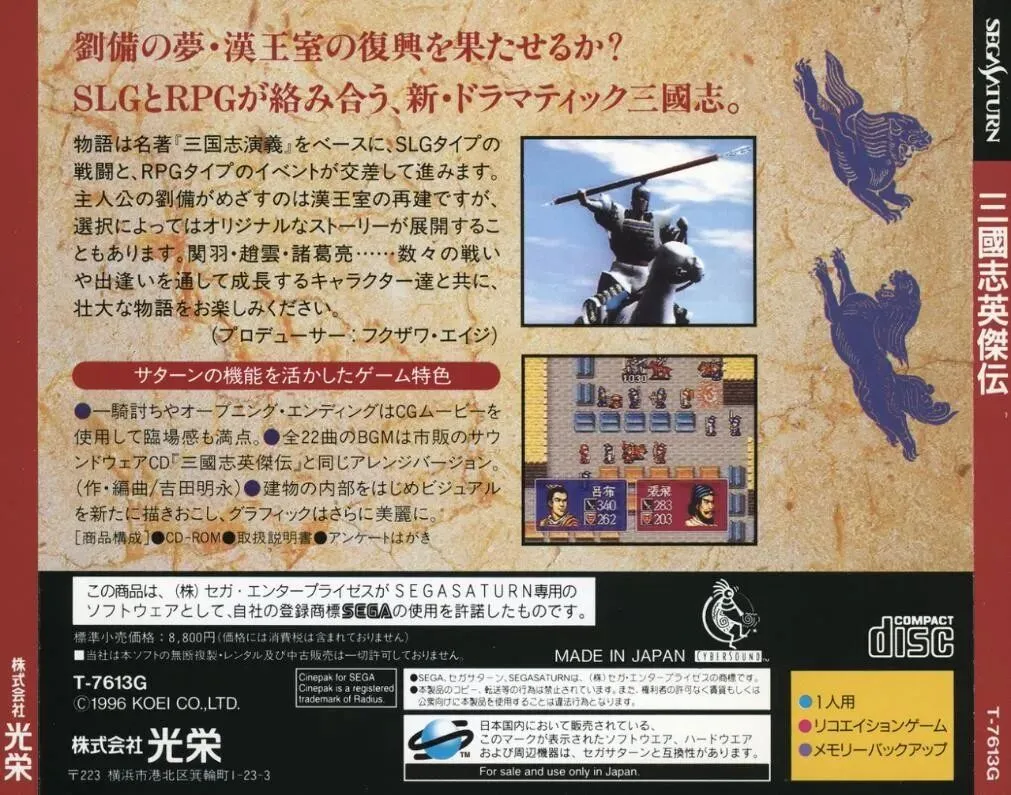
Sangokushi Eiketsuden adopts the Three Kingdoms story background that is very familiar to Chinese players. Players play the protagonist Liu Bei and start from the three brothers in Taoyuan. It restores historical events such as the battle for Xuzhou, the Battle of Guandu, the capture of Jingzhou, the march into Xichuan, the attack and defense of Hanzhong, and the defeat in Yiling. At the same time, there are also fictional contents such as the recapture of Jingzhou and the final march north to attack Cao Wei and occupy Yecheng.
The most attractive thing about Sangokushi Eiketsuden is that there are dozens of generals to choose from, including real people such as the Five Tiger Generals, Zhuge Liang, Pang Tong, Jiang Wei, and Wei Yan, as well as fictional original characters.
Players can form and train a team to conquer the world according to their preferences. In the absence of strategies, repeated attempts are needed to find the optimal combination. In addition, there are a large number of treasures to collect in the levels, and a large number of enthusiasts repeatedly play through the levels just to achieve perfection.
The Saturn port features a tilted perspective, giving it a more three-dimensional feel than the top-down perspective of the PC original. It also incorporates 3D cutscenes, and the chibi characters leave a lasting impression. Notably, this game was one of the rare official Chinese-language games available on the console at the time, with nearly every Saturn player owning a copy.
The following is a detailed analysis of the game from four perspectives: basic information, core innovations, version differences, and historical significance.
Development and Distribution: Led by Koei Tecmo (the original developer of the series), the game was distributed on a single CD with the serial number T-7603H-16 for the Saturn.
As the first port of Koei Tecmo’s “Heroes of Legends” series, it retains the core framework of the PC original while being customized and optimized for the Saturn’s hardware features (dual CPU architecture and hybrid 2D/3D rendering capabilities).
Story Background: Based on the Romance of the Three Kingdoms, the story is told from Liu Bei’s perspective. Beginning with the Peach Garden Oath of Brotherhood and the campaign against Dong Zhuo, the story fully recreates historical events such as the Battle of Xuzhou, the Battle of Guandu, the Battle of Red Cliffs, and the conquest of Western Sichuan, culminating in the fictional ending of “uniting Wu to destroy Wei and restoring the Han Dynasty.”
The storyline balances historical authenticity with gameplay, including the original storyline of Zhao Yun’s duel with Xiahou En in the “Rescue at Changban Slope” level, and the opening of the Northern Expedition sub-quest led by Zhuge Liang after the “Entrustment of the Orphan to the care of the deceased at Baidi City.”
Core Gameplay: A fusion of turn-based chess and character development – players deploy their generals on a tilted-view battlefield (control up to 20 characters simultaneously), formulating tactics by leveraging “army counteractions” (infantry counters archers, cavalry counters infantry, and archers counter cavalry) and terrain advantages (mountains improve defense, water restricts movement).
Generals level up through battle, accumulating experience and unlocking exclusive skills (such as Guan Yu’s “Blue Dragon Crescent Slash” and Zhuge Liang’s “Eight Formations”), while also collecting treasures (such as the “Red Hare” for increased mobility and the “Jade Seal” for enhanced attributes) to strengthen the team.
Compared to the 1995 DOS original, the Saturn version has undergone a comprehensive upgrade in visuals, sound effects, and content presentation, while retaining the series’ iconic “historical immersion”:
Upgraded perspective and image quality: Abandoning the original PC version’s 2D top-down perspective, the game adopts the Saturn platform’s iconic 45-degree tilted isometric perspective.
The battlefield map enhances the three-dimensional sense through multi-layered depth of field design (such as the uneven height of the city and the dynamic texture of the river); the character sprite resolution is increased to the 32-bit color standard, and the general portraits have a shadow gradient effect. Enemy and friendly forces are distinguished by distinct colors (friendly forces are marked in blue, and enemies are marked in red), reducing the pressure of battlefield identification.
New animations and special effects: 3D cutscenes were added for the first time, such as the generals’ charging shots in “Three Heroes vs.
Lü Bu” and the ship explosion special effects in “The Burning of Red Cliffs”.
Although limited by Saturn’s 3D rendering capabilities and low model accuracy (jokingly referred to by players as “poor quality 3D”), it was still a technological breakthrough for console Three Kingdoms games at the time; combat special effects were greatly enhanced, such as the flame particle diffusion when Zhuge Liang released the “Fire Attack Plan” and the sonic oscillation effect of Zhang Fei’s “Roar” skill, which were synchronized with the screen through Saturn’s audio chip.
Interface and interaction optimization: The meeting hall scene is changed to a “paper man dialogue system” – the generals appear in the form of standing portraits, and dynamic feedback such as head shaking and hand movements are added during the dialogue, replacing the original static text box; the menu bar adopts a translucent floating design and supports shortcut key operations (such as L key to switch generals, R key to view terrain information), which improves operational efficiency.
Music Rearrangement: Retaining the ancient melodies of the original PC version (such as “The Peach Garden Oath” and “The Northern Expedition”), the music has been re-arranged for Saturn’s CD-quality sound, incorporating samples of traditional instruments like the guzheng and drums.
For example, the score for the “Battle of Red Cliffs” stage simulates the intensity of the battlefield through rhythmic variations, while the string solo during the “Empty City Strategy” heightens the suspenseful atmosphere.
Official Chinese Language Support: As a rare official Chinese language game for 1990s consoles, the Saturn version offers Traditional Chinese (some players have access to Simplified Chinese via a patch).
Text translations accurately restore the Three Kingdoms context—for example, classic lines like Liu Bei’s “Do not commit evil, no matter how small” and Zhuge Liang’s “Dedicate all your life to the cause, and never stop until your death” are fully preserved, overcoming the language barrier of the original PC version’s Japanese/English versions, making it a must-have for Chinese-speaking Saturn players.
A rich roster of playable characters: Over 50 playable characters, including historical figures like the Five Tiger Generals and Zhuge Liang, as well as original characters like “Ma Yunlu” (Ma Chao’s sister).
Each character has a unique growth curve (e.g., Guan Yu focuses on attack power, Zhao Yun on agility, and Zhuge Liang on intelligence). Players can unlock character-specific endings through the “favorability system” (increased by completing side quests).
Hidden Elements: Numerous treasures (over 30 in total) are scattered throughout the stages, some requiring specific conditions to obtain. For example, defeating Xiahou Yuan in the Battle of Dingjun Mountain unlocks the “Qingguang Sword,” while annihilating all enemies in the Battle of Wuzhangyuan grants the “Wooden Ox and Flowing Horse” (increasing the amount of food and fodder carried).
Furthermore, the hidden character “Zuo Ci” can only be unlocked by completing 10 stages without taking any damage. His unique skill, “Illusion,” allows him to randomly manipulate enemy generals.
Compared to the original PC and SFC versions, the Saturn version has distinct advantages and disadvantages, making it a unique entity in the series:
| Dimension | Sega Saturn version | DOS original | SFC version |
| Graphics | 45-degree tilted camera with 3D cutscenes, 2D character illustrations at 640×480 resolution | Pure 2D top-down perspective, 16-color pixel art | Enhanced color rendering, but no 3D animations |
| Audio Specifications | CD-quality soundtrack + partial voiceover (such as character special move dialogue) | FM synthesized sound, no voiceover | Enhanced stereo sound, no 3D audio |
| User Experience | Supports Saturn controller shortcuts and optimized interface interaction | Keyboard operation, simple interface | Controller operation, but no shortcuts |
| Exclusive Content | 3D cutscenes, paper-like dialogue system, Chinese localization | No exclusive content | Added some side quests, but no Chinese |
| Shortcomings | Slow scene transitions and limited 3D model accuracy | Poor compatibility (cannot run on some DOS systems) | Highly saturated colors and a narrow field of view |
In addition, the Saturn version corrected several bugs in the original PC version (such as “general experience value overflow” and “treasures cannot be picked up normally”), and adjusted the level difficulty curve – reducing the difficulty of the early “suppression of the Yellow Turbans” and increasing the strategic depth of the later “Northern Expedition against Cao Wei” (such as the addition of Sima Yi’s “empty city plan” AI mechanism).
In its early days, the game became a “phenomenal strategy game” for the Saturn platform, thanks to its “official Chinese language” and Three Kingdoms-themed content.
Sales in Japan exceeded 50,000 copies, with nearly every Chinese-speaking player owning one, and the secondary market price consistently remained above $100.
Media reviews were largely positive: Famitsu gave it a score of 32/40 (8/8/8/8), praising its “perfect blend of historical depth and chess strategy.”
A forum for veteran Chinese gamers listed it as one of the “Top Ten Saturn Strategy Masterpieces,” acknowledging that its “Chinese localization surpassed all other Three Kingdoms console games of the same period.”
Series-wise: This established the standard for porting the “Heroes of the Three Kingdoms” series. Subsequent titles like “Romance of the Three Kingdoms: The Legend of Kongming” and “The Legend of Mōri Motonari” all continued the Saturn version’s “visual upgrade + localization optimization” approach, becoming the core template for Koei Tecmo’s historical game ports.
Platform-wise: This game addressed the Saturn’s weakness of a lack of third-party strategy games. Facing competition from Sony’s PlayStation, Koei Tecmo used this game to demonstrate the Saturn’s 2D rendering capabilities and the potential of the Chinese market, indirectly promoting the release of Chinese games like “Chinese Paladin” on the Saturn platform.
As a “living fossil” of Chinese console games from the 1990s, the original Saturn version of “Romance of the Three Kingdoms Heroes” (especially the one with the Chinese manual) has become a sought-after collector’s item, with new, unopened discs fetching over $300.
Emulator players are also revisiting the game using a “Simplified Chinese patch” (supporting SAROO cartridges), keeping it popular in the nostalgic gaming community.
Whenever you think of strategy games, this classic is undeniably a name. Released in 1995 for the Nintendo SNES, this game revolutionized the traditional top-down perspective of strategy games, exemplified by Fire Emblem.
Tactic Ogre utilizes a 45-degree perspective to create a variety of environments and terrain, allowing players to experience a whole new level of 3D strategy.
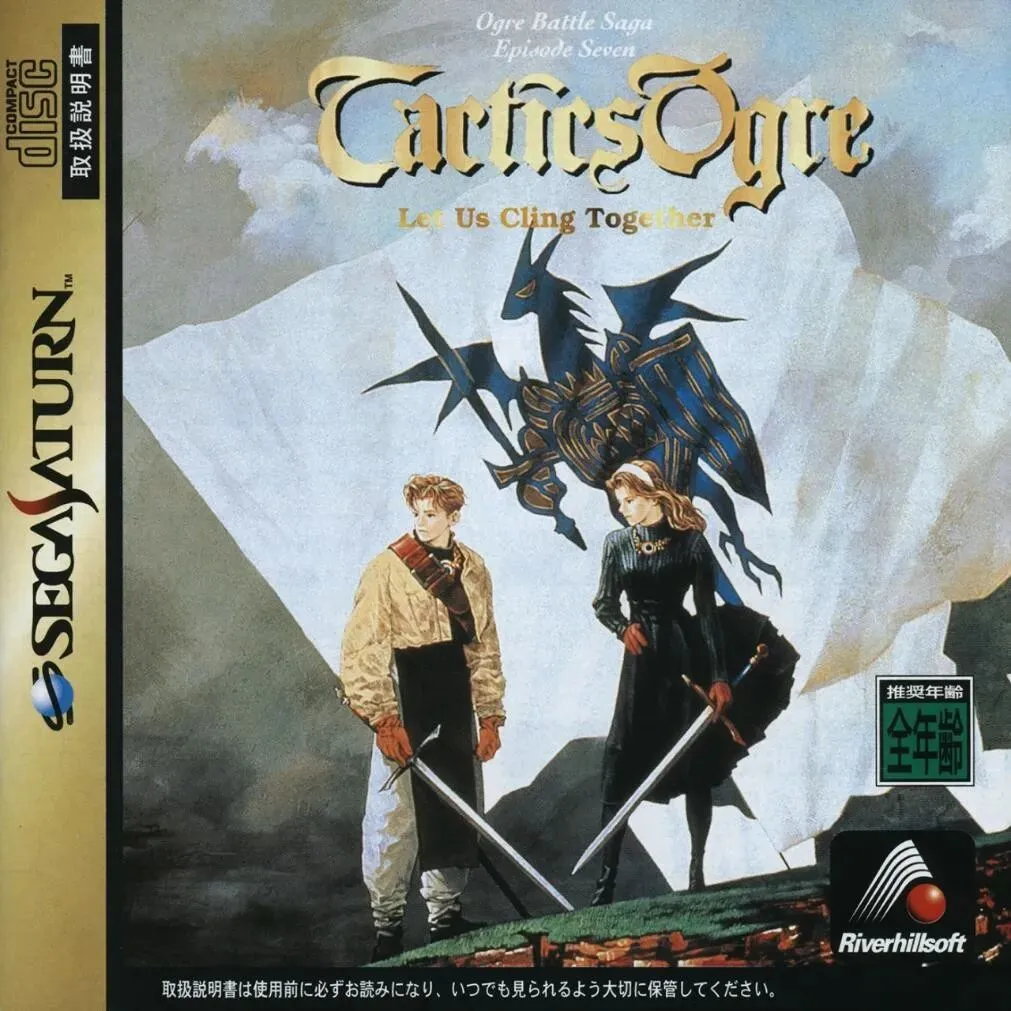
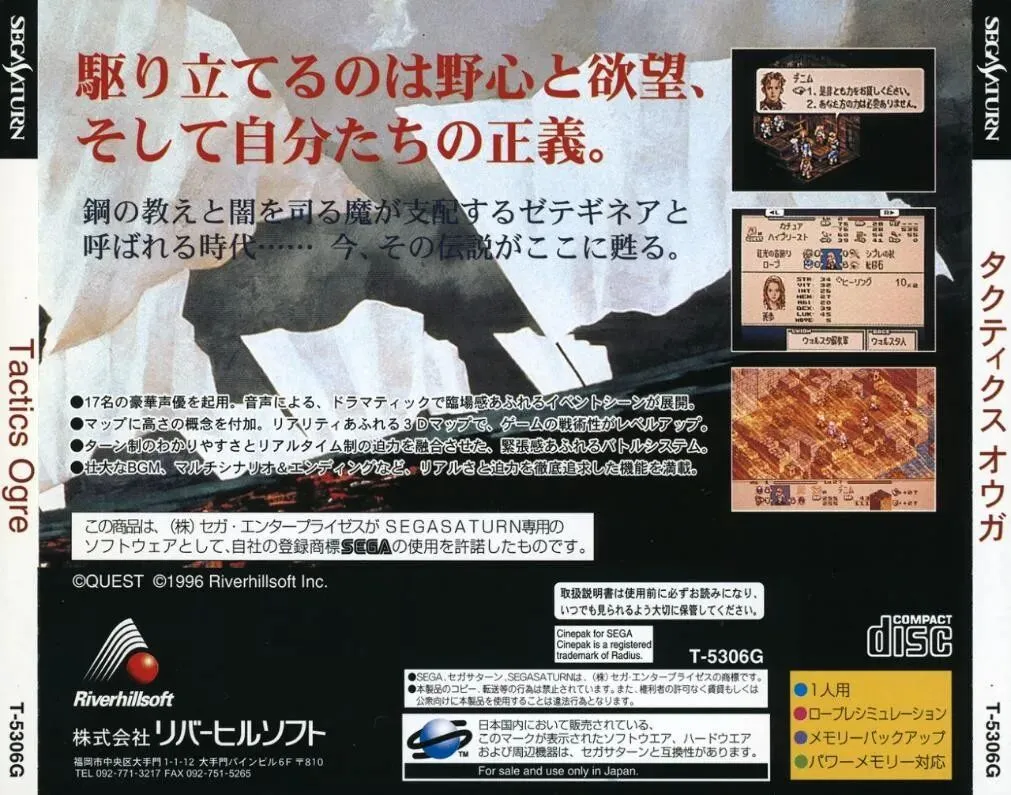
As a milestone in the history of strategy and war chess games, “Tactic Ogre 2” has established its status as a “hall-of-fame masterpiece” with its profound plot core, innovative gameplay system and grand world view.
Core producer Yasumi Matsuno, through his own travels in Eastern Europe, projected the real-world regional divisions and civil wars into the game, greatly enhancing the player’s sense of immersion and giving people a strong motivation to delve into the details of the characters and the stories behind them.
The connotations displayed by the country, nation, religion, and other content are incomparable to previous game works.
In terms of the game system, the three-dimensional scenes bring rich mobile attack effects, and the development of numerous character professions also makes the game highly replayable, and has been referenced by other manufacturers in subsequent similar works.
The biggest evolution of the Saturn port is the addition of about three hours of cutscene story voiceover. Even old players who have played the original version have the opportunity to relive the epic plot in a whole new way.
In 1995, Japanese game company Quest released this game for the Super Famicom console, led by the talented producer Yasumi Matsuno.
Inspired by the Queen song “Let Us Cling Together” (the game’s subtitle), the game’s creation was imbued with profound reflections on racial conflict and power dynamics, inspired by the trauma of war Matsuno witnessed in Eastern Europe.
The game was initially selected as a Famitsu Hall of Fame title with a high score of 34, and its sales doubled that of its predecessor. It was subsequently ported to platforms such as the PlayStation and Sega Saturn (SS).
The SS version featured live-action voice acting and improved graphics, making it a classic port for veteran players. The 2022 remake, Tactics Ogre: Reborn, further optimized the combat rhythm and system balance.
The story takes place on the island of Valyria in the Oberon Sea, where five nations/forces live together, forming a complex power structure:
Bakuram (Northern Nobility): The people of the previous king consider themselves a superior race and are allied with the Northern Theocracy of Rodis.
Galgastan (Majority): They make up 70% of the population but have long been suppressed, persecuting the Valsta under the pretext of “ethnic cleansing.”
Valsta (Protagonist’s group): Once a dominant ethnic group, they are now a vulnerable group, leading a liberation movement led by Duke Longwe.
Rodis Theocracy: The mastermind behind the island’s political situation, manipulating it through espionage and military intervention.
Zenobian Exiles: A remnant of the previous game, led by the Paladin Lancelot, they become a crucial supporter of the protagonist.
Sixteen-year-old Denim, a young man from Valsta, liberates the city of Armorica with the help of the Zenobians and rescues the captured Duke of Longwe, becoming embroiled in the continental conflict.
The plot isn’t a simple story of “righteous revenge,” but rather showcases the absurdity of war through multiple choices: Every player decision (such as whether to execute prisoners or ally with a faction) affects their reputation, triggering three distinct endings and even changing the fate of key characters.
This “branching timeline system” was revolutionary in 1995, allowing players to truly experience the weight of “writing their own history.”
The game adopts a hexagonal grid war chess mode, integrating the three strategic dimensions of terrain, profession, and attributes:
Terrain Effects: 35 different terrain types are displayed within a 45-degree field of view. High ground increases arrow range, water limits the movement of heavy units, and rain increases the range of lightning spells.
Class System: Over 30 classes form a complex progression tree, ranging from basic warriors and wizards to advanced paladins and dragon riders. These classes are unlocked through “Class Change Certificates” and support skill inheritance.
Combat Details: Details such as a “weight system” (heavy equipment reduces mobility) and “elemental restraint” (fire overcomes wind, light overcomes dark) are introduced. Even a character’s “ethnic friendliness” affects recruitment success rates.
The remastered version features a new battlefield replay feature, allowing players to replay any turn and re-evaluate their decisions, significantly reducing the frustration of traditional chess.
A dynamic difficulty adjustment system automatically lowers enemy levels after consecutive defeats, while the “Quick Save/Load” feature remains, making it easy to farm rare equipment.
Denim (protagonist): Starts as a warrior. Leadership determines the range of his command, and growth influences the direction of his faction.
Katyuya (protagonist’s sister): A healer whose fate is deeply tied to the player’s moral choices.
Lancelot (Paladin): Leader of the Zenobia, possessing the strongest physical defense in the game.
Canopus (Windbringer): Leader of the Warcraft Legion, specializes in summoning birds to launch aerial attacks.
The beginner’s trio: Knight (frontline damage protection) + Priest (group healing) + Elementalist (area magic).
Late-game burst build: Assassin (flanking crit) + Summoner (dragon summons) + Dragoon (terrain-aware).
Resource Management: The shop refreshes rare materials weekly, so prioritize “Angel Feather” (a resurrection item) for core units.
As Yasuki Matsuno’s masterpiece, “Royal Knights 2” pioneered the “story-driven war chess” genre, and its design concept has profoundly influenced subsequent works:
Even 30 years later, this game continues to be talked about with relish by players.
Both the retro feel of the SFC original and the refined experience of the remastered version allow both new and veteran players to experience the pinnacle of strategy and wargaming.
As Yasuki Matsuno puts it, “I wanted players to fully immerse themselves in that chaotic world, as if watching a historical film.”
In addition to the familiar “Super Robot Wars” series of robot strategy games under Bandai, Kidou Senshi Gundam – Gihren no Yabou was also widely sought after by players.
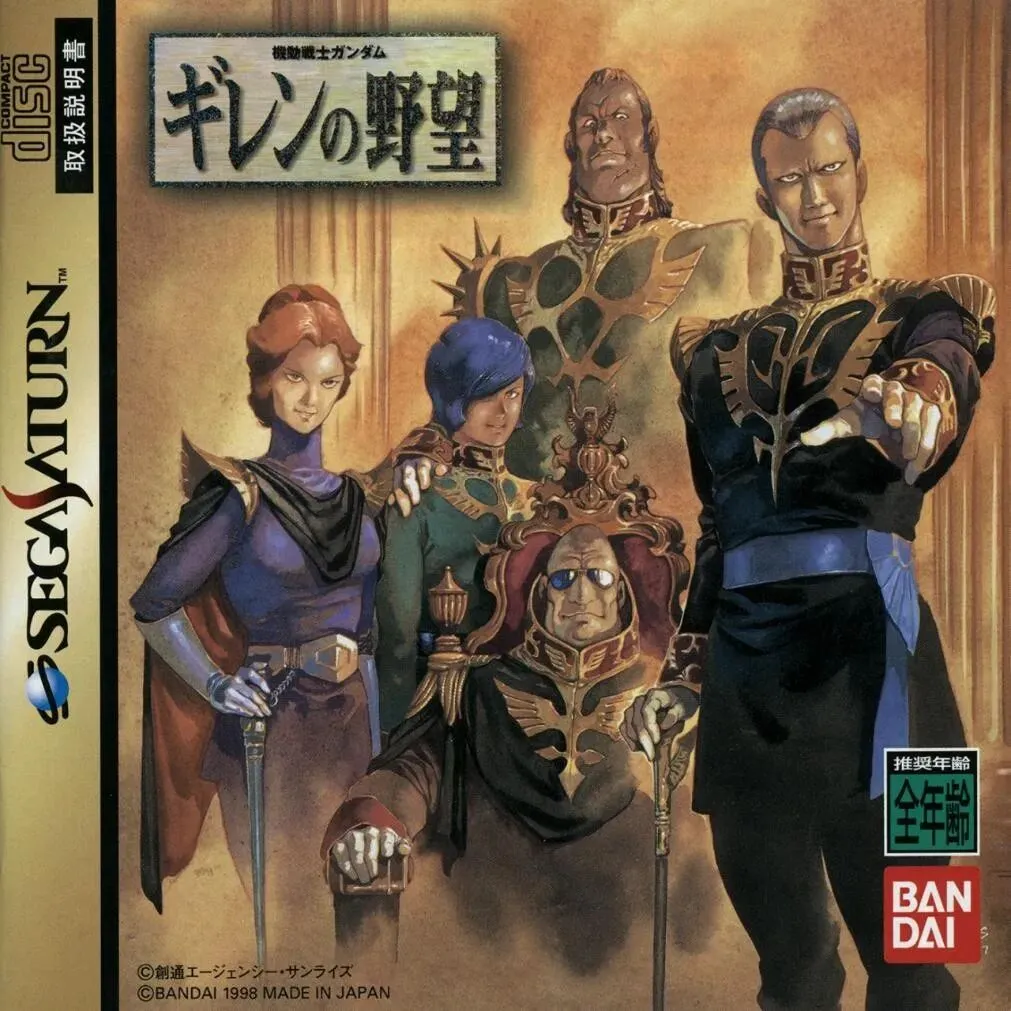
Rather than adopting the “free-for-all” format of many other games, this game focuses on the original Gundam series, Mobile Suit Gundam, and takes the One Year War as its primary timeline.
Players can assume the role of either the Earth Federation or the Principality of Zeon, ultimately striving for victory through resource acquisition, mobile suit research, diplomatic negotiations, and turn-based combat.
The various units and battlefield controls in the game are based on the anime, making it incredibly engaging for fans of the original series. Even casual gamers will find the anime version engaging after a bit of time to get started.
Kidou Senshi Gundam – Gihren no Yabou doesn’t feature the flashy battle animations of Super Robot Wars, but this pure strategy experience is rare these days, making it a great choice to revisit the Saturn version.
As a benchmark series of Gundam IP strategy games, Kidou Senshi Gundam – Gihren no Yabou (ギレンの野望) is centered on the “One Year War” of the UC era. Through deep strategic simulation and immersive world view restoration, it has become a representative strategy game for the Sega Saturn (SS) platform.
Kidou Senshi Gundam – Gihren no Yabou was developed by Bandai (now BNGI). Since the first game was released on the Sega Saturn in 1998, there have been 10 main games released, and each version has continued to evolve in terms of system depth and content scale:
As the series’s first installment, the SS version uses the One Year War as its sole timeline, delivering the first full-scale strategic reconstruction of this historical event.
The game innovatively utilizes a two-stage “strategy map + real-time battle” format, abandoning the grid restrictions of traditional tactical chess and allowing units to move freely across an open map (only point attacks and defenses require a scene switch).
To enhance the immersive experience, Sunrise has specially produced original animation sequences, complemented by re-recorded classic dialogue from the voice actors, allowing players to evoke famous scenes such as the “Char’s Rebellion” and the “A-Bawa-Ku Decisive Battle” while commanding battles.
This PlayStation game is the culmination of the series, with sales exceeding 500,000 copies, even topping the sales charts at the same time as Vagrant Story. Key innovations include:
Faction Expansion: Added factions such as the AEUG and Axis, which debuted after the One Year War, and a significant increase in the number of mobile suits.
Zoned Combat: Except for key strongholds, ordinary areas can be divided into sub-battlefields, supporting multi-front coordinated operations.
Diplomatic System: Introducing diplomatic commands such as alliances, trade, and deterrence, expanding the strategic dimension from purely military to political games.
“Zeon’s Independence War” (2002, PS2): This game streamlined its resource system and added a legion system and an original character mode. However, its rudimentary combat system and lack of popular characters led to mixed reviews.
“Axis Menace” (2008, PSP): Based on “Genealogy of Zeon,” this game features over 200 characters and over 400 units. It sold 145,000 copies, ranking fourth among PSP games that month.
Remastered Ports: Several games in the series were subsequently released on platforms like the DC and PSP, some with improved loading speeds and resolution.
The series maintains the core framework of “turn-based strategy + real-time combat,” while at the same time, through differentiated faction characteristics and in-depth system design, every battle is full of strategic variables:
Players can choose between the Earth Federation and the Principality of Zeon, each with completely different initial resources, troop systems, and victory conditions:
Principality of Zeon (Giren Zabi’s perspective): Initially, they have an advantage in mobile suits (MS), excelling at rapid raids and capturing strongholds. However, their resource reserves are limited, requiring them to plunder enemy strongholds to maintain their war machine.
Earth Federation (Rebil’s perspective): Initially, they lack mobile suits and rely on traditional weapons like the Type 61 tank and fighter jets. They must leverage their abundant funds and resources to advance “Operation V” (the Gundam development program), and, later, mass-produce Gundams to turn the tide of the war.
The strategic depth of the game is reflected in the mutual constraints of four dimensions: resources, research and development, diplomacy, and tactics.
Resource Management: Struggle for access to strongholds like mines and factories to obtain funds and minerals. The Federation can leverage its resource advantages to mass-produce inexpensive units, while the Zeon forces must prioritize developing cost-effective mobile suits.
Weapon Research and Development: Invest in technological advancements to unlock a full range of equipment, from Zakus to Gundams, fighter jets to space battleships. For example, the Federation forces should initially prioritize developing submarines to counter Zeon’s underwater mobile suits.
Tactical Coordination: Supports multi-service combined arms operations, with classic tactics like “wolf pack” (using superior numbers to encircle and annihilate elite enemy units) and “transport aircraft decoy” (using transport aircraft to draw fire while tanks advance).
Point Attack and Defense: Battles for key strongholds (such as Hawaii and Beijing) require strategic landings. Players must choose areas vulnerable to enemy aircraft and utilize Minovsky particle dispersion to reduce enemy accuracy.
The game strictly adheres to the UC Gundam universe, with the player’s strategic decisions triggering different historical branches:
For example, in the Federation Army prologue, the player must choose between “prioritizing the capture of Hawaii” or “simultaneously attacking Hawaii and Madras.” A wrong decision could result in the death of General Rebil and a Game Over.
Some versions also include hidden events, such as a chance to obtain a rare organic by shooting down an enemy transport plane.
As a derivative work of the Gundam IP, Kidou Senshi Gundam has reached the top level of strategy games in terms of world view presentation:
The game revolves around the timeline of the One Year War, fully recreating key battles from the Battle of Loum to the Decisive Battle of A-Bawa-Aku.
Through dynamic battlefield environments (such as the effects of outer space gravity and the terrain variations of Earth’s battlefields) and unit-specific features (aquatic mobile suits are limited to water combat, while air units command air superiority), players can truly experience the tactical differences between different battlefields.
The series features hundreds of characters and mechas from the UC era, including core characters like Amuro and Char, as well as original characters from spin-offs like OVAs and novels.
Each character has unique lines and bonus abilities. For example, Char’s Red Zaku triggers a “Newtype Reaction,” improving maneuverability and accuracy.
As the first full-scale strategy game centered around the One Year War, Ambition of the Alliance pioneered a creative model combining deep IP integration with hardcore strategy.
Its design features, such as open map combat and multi-dimensional resource management, influenced the strategic system architecture of the subsequent Super Robot Wars series.
Beyond plastic models and anime, the series has also pioneered strategy gaming for the Gundam IP. Genealogy of Zeon, in particular, has sold 500,000 copies, proving the commercial potential of hardcore strategy games.
Its meticulous restoration of the UC universe not only satisfies the nostalgic needs of veteran fans, but also allows new players to gain a deeper understanding of the historical context of the One Year War through strategic simulation.
For modern players, while the early games in the series may have a retro aesthetic, versions like Genealogy of Zeon and Axis Menace remain must-see classics for Gundam fans and strategy game enthusiasts due to their deep strategic depth and emotional appeal.
(To be continued)